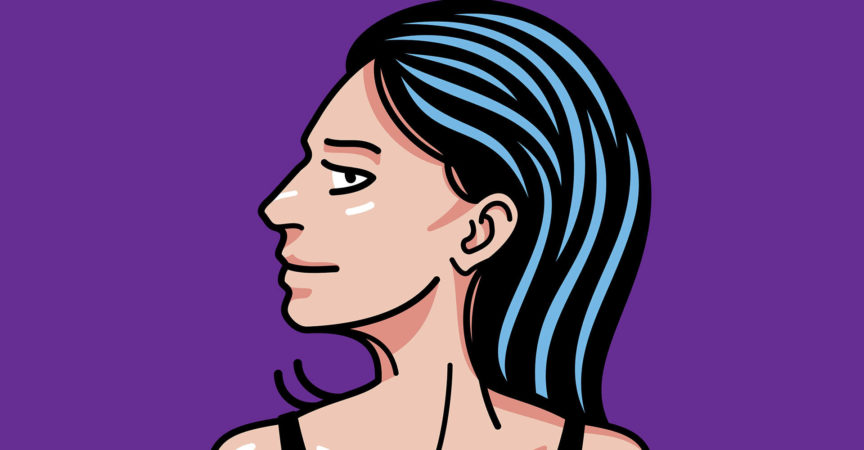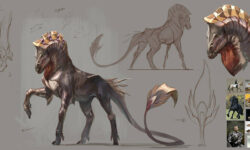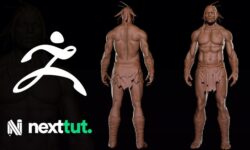Release date:2019, March 22
Duration:18 h 29 m
Author:Deke McClelland
Skill level:Beginner
Language:English
Exercise files:Yes
Discover how to design and create amazing works of art using Adobe Illustrator CC 2019, the world’s most powerful vector-based drawing program. This comprehensive training course is the first in a series of three courses by industry pro Deke McClelland. Learn how to work with artboards; how to draw anything you can imagine with the Pencil, Curvature, and Pen tools; and how to start organizing color in your artwork with the help of swatches. Deke also covers drawing shapes, adjusting strokes, formatting text with variable fonts, and painting freeform artwork, with or without a tablet. Each chapter leaves you with a new set of skills—and a real sense of accomplishment.
Topics include:
Opening, creating, saving, and closing documents
Working with artboards
Zooming and panning
Drawing lines, arcs, grids, and spirals
Drawing shapes
Working in RGB vs. CMYK color modes
Creating and applying swatches
Adjusting stroke and line weight
Formatting text with variable fonts
Building custom paths with the Shape Builder and Join tools
Freeform drawing with the Pencil
Painting and erasing artwork with the Blob brush
Drawing with the Curvature tool
Illustrator’s best: the Pen tool
Reshaping rounded corners for artistic effect
Exporting screen graphics
Watch online or Download for Free
Introduction
001 The most comprehensive Illustrator training
002 A few important items before you begin
01. Working with Documents
003 A first look at Illustrator
004 Opening from the Windows desktop
005 Opening from the Macintosh Finder
006 Introducing the Start screen
007 Creating a new document
008 The units of design – Points and picas
009 The Advanced document settings
010 Activate missing fonts
011 Modifying your new document
012 Saving your changes
013 Closing open documents on the PC
014 Closing open documents on the Mac
02. Working with Artboards
015 Pages of any size, at any angle
016 Using the Artboard tool
017 Undo, Redo, and Revert
018 Selecting multiple artboards
019 Creating and duplicating artboards
020 Five ways to resize artboards
021 Introducing the Artboards panel
022 Navigating between artboards
023 Aligning and distributing artboards
024 Automatically tidying up your artboards
025 Artboards and rulers
03. Getting Around
026 Navigating your artwork
027 Zooming in and out
028 Using the more precise Zoom tool
029 Zooming on a selection (or not)
030 Animated zooming and GPU Performance
031 Scrolling (or panning) a document
032 Specifying a custom zoom level
033 Working with multiple open documents
034 Customizing your panels (important!)
035 Saving your custom panels as a workspace
036 Cycling between screen modes
037 Trim view presentation mode
04. Drawing Lines
038 Now, we draw
039 Creating center guides
040 Using the Line Segment tool
041 Straight lines and the bounding box
042 Duplicating and extending
043 Using the Move command
044 Introducing the Scissors tool
045 Joining your line segments
046 Using the Arc tool
047 Using the Rectangular Grid tool
048 Using the Polar Grid tool
049 Using the Spiral tool
050 Adding a circular end to a spiral
051 Adjusting the curvature of an arc
052 Centering all artwork on an artboard
05. Drawing Shapes
053 And now, we draw better
054 Creating a time-saving template
055 Using the Ellipse tool
056 Live ellipses and pies
057 Drawing two perfectly aligned circles
058 Creating compound paths
059 Using the Rectangle tool
060 The dynamic round corner controls
061 Adding some simple reflections
062 Rotating your artwork into position
063 Using the Polygon and Star tools
064 Working with live polygons
065 Creating the perfect five-pointed star
066 Repeating stars in alternating rows
067 Introducing the Group Isolation mode
068 Adding a drop shadow to a layer
069 Using the crazy Flare tool
070 The top-secret tilde key trick
06. Color and Swatches
071 How color works
072 The color modes – RGB vs. CMYK
073 Hue, saturation, and brightness
074 Selecting a color from the spectrum
075 Creating and applying swatches
076 Working with global swatches
077 Searching swatches by name
078 Auto-deleting and adding swatches
079 Using the Eyedropper tool
080 Loading swatches from another document
07. Strokes, Dashes, and Arrows
081 The rick world of strokes
082 Adjusting the line weight
083 How strokes align to path outlines
084 Caps, joins, and miter limit
085 Making practical use of caps and joins
086 Dashes and arrowheads
087 Variable-width strokes
088 Numerically adjusting Width points
089 Custom aligning strokes to paths
090 Creating a custom Width Profile
091 Creating a classic round-dotted outline
092 Drawing a quick-and-dirty gear
093 Combining multiple strokes
094 Offsetting strokes to simulate depth
08. Creating and Formatting Type
095 Text at its best
096 Placing and flowing text
097 Converting between area and point type
098 Modifying the text frame
099 Creating custom margins guides
100 Changing the font and type style
101 Introducing variable fonts
102 Paragraph alignment
103 Type size and leading
104 Dialing in custom variable styles
105 Creating your own custom italics
106 Kerning characters of type
107 Roman hanging punctuation
108 Filling and stroking text
09. Building Custom Paths
109 Join and the Shape Builder
110 Using the Join command
111 Using the Join tool
112 Object _ Path _ Outline Stroke
113 Using the Shape Builder tool
114 More ways to use the Shape Builder
115 Creating a real-world project
116 Creating an inset reflection
117 Coloring a path with the Shape Builder
118 Sculpting with variable-width strokes
119 Converting text to path outlines
120 Gap detection and path splitting
121 Drawing with the Shaper tool
122 Combining paths with the Shaper tool
123 Editing paths inside a Shaper group
10. Using the Pencil Tol
124 A world-leading freeform drawing tool
125 Drawing freeform path outlines
126 The Smooth tool and Path Eraser
127 Extending and connecting paths
128 Drawing straight and perpendicular lines
129 Creating a tracing template
130 Combining the Pencil with a drawing tablet
131 Coloring your Pencil tool art
11. Painting and Erasing
132 The best tools for painting
133 Painting with the Blob Brush
134 Fusing path outlines together
135 Introducing the Eraser tool
136 Reassigning keyboard shortcuts
137 Merging selected paths
138 Releasing compound paths
139 Erasing and smoothing lumps
140 Painting with a few simple clicks
141 Reducing the roundness value
142 Painting with a drawing tablet
12. Using the Curvature Tool
143 Drawing a path one point at a time
144 Drawing with the Curvature tool
145 Working with smooth and corner points
146 Creating and editing open path outlines
147 Tracing a photographic detail
148 Adding a basic textured fill
149 Shape-building a castle wall
150 A first look at gradients
151 Editing a shape with the Curvature tool
152 A first look at object blends
153 Duplicating and scaling a complex object
154 Drawing a custom letterform
155 Creating a rippling line segment
156 Adding a piece of vector-based clipart
13. Using the Pen Tool
157 The one tool that can draw anything
158 Creating corner points
159 Adding and deleting anchor points
160 How smooth points work
161 Drawing smooth points
162 Drawing cusp points
163 Using the Anchor Point tool
164 Real-world drawing with the Pen tool
165 Drawing a very complex path outline
166 Copying and repurpose path segments
167 Drawing a lot with very few points
168 Creating dimension with shadows
169 Shading the eye, ear, and nose
170 Drawing smoothly waving path outlines
14. Drawing with Round Corners
171 Making corners smooth
172 The round corner widget
173 Rounding off corner points
174 Changing the corner type
175 Rounding characters of type
176 Absolute vs. relative rounding
177 Drawing with rounded rectangles
178 Drawing an iPhone
179 Decorating an iPhone screen
180 Drawing a leather smartphone case
181 Colorizing a line art template
182 Turning corners into organic curves
183 Reshaping rounded paths
15. Making Screen Graphics
184 Saving for devices and the web
185 Aligning objects to the pixel grid
186 Aligning objects as you draw or modify them
187 Aligning text to the pixel grid
188 Introducing the Save for Web command
189 Scaling your art to suit its destination
190 For devices and presentations, use PNG
191 Saving an 8-bit graphic
192 Saving a JPEG image
193 Saving vector-based SVG files
194 Assigning a copyright
195 Using the Export for Screens command
196 Using the Asset Export panel
197 Asset export time-saving tricks
Conclusion
198 Until next time
Exercise Files.zip
Join us on
 Channel and
Channel and  Group
Group





 Channel
Channel






Thank You for this..
any chance to get the one on one advanced and mastery 2019?
09 BUILDING CUSTOM PATHS video 114 More ways to use shape builder has problem playing.
Its blank.